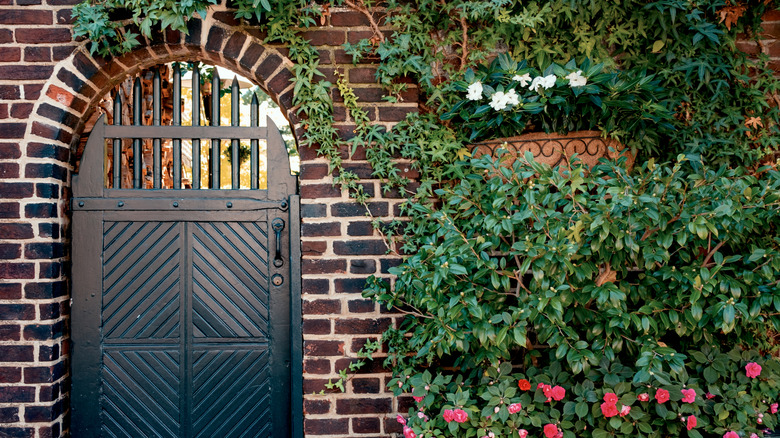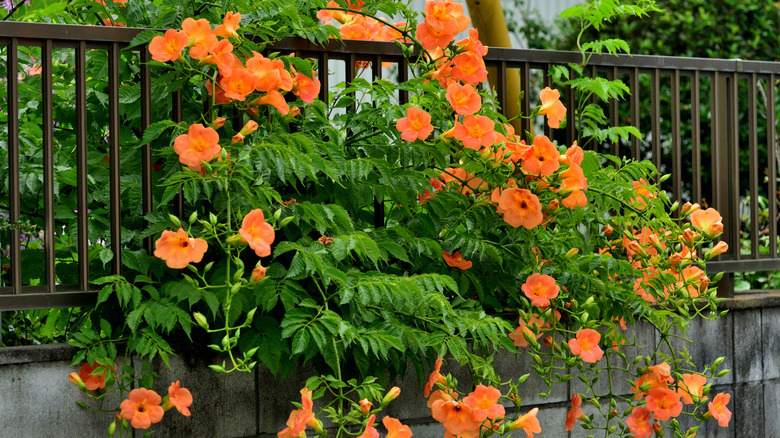The Beautiful Yet Invasive Vine You Should Think Twice About Planting In Your Garden
At first glance, the trumpet creeper (Campsis radicans) seems like the perfect addition to any garden. It has vibrant red-orange vines and trumpet-shaped blooms that make it a visually stunning addition to any landscape. Not only does this musical-sounding flower add color and attract hummingbirds to your yard, but it also invites butterflies with their enticing nectar. This fast-growing vine is particularly common within the Southeastern and Midwestern regions of the United States, where you've likely seen it climbing on brick, wood, or stone walls. While all of this might sound appealing, unfortunately, this plant is invasive and comes with a devilish alter ego.
The trumpet creeper has coined the nicknames "Hellvine" and "Devil's Shoestring" for good reason. Its aggressive growth is one of the main reasons many gardeners choose to steer clear of this plant. It's known to be an invasive weed and can cause havoc in its surroundings. Moreover, you may even find this plant in less-than-glamorous environments, such as waste grounds or on the roadsides, making it more of an unwelcome guest in your garden than a showcase plant.
Why the trumpet creeper doesn't belong in your garden
Beyond its invasive nature, the trumpet creeper comes with a laundry list of additional problems that make it less than desirable. For starters, it is highly flammable and is a plant that should never be grown in dry climates, especially in areas prone to wildfires or surrounded by dry brush. It's also known to cause skin reactions in some individuals, resulting in symptoms like redness, itching, and even swelling. On top of that, it serves as a habitat for ants, which can attract more of these pesky critters to your home. Moreover, it has the potential to be highly destructive to your property.
As it grows, the plant's abrasive stems can destroy your home walls, especially if they have wood siding. Trumpet creeper is also known to be a plant you should avoid growing next to anything else, as it can destroy the plants in its vicinity for its livelihood. In other words, if you have other plants around, you should be wary of the possible consequences. With its rapid growth, it may even spread into your neighbor's property, creating a difficult and sometimes contentious problem to resolve. For your garden, there are a plethora of other beautiful plants to add to your collection. And despite its visual appeal, the trumpet creeper is a plant that's much better off in the wild.

